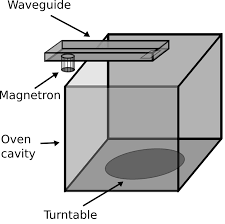Waveguide switches play a pivotal role in the realm of RF (Radio Frequency) systems, guiding signals through complex pathways with precision and efficiency. Their evolution reflects significant technological advancements, pushing the boundaries of communication and radar systems.
Introduction to Waveguide Switches
Waveguide switches are critical components that direct RF energy through predetermined paths within waveguide systems. These devices enable or disable signal paths, facilitating versatile configurations for various applications, including satellite communications, military radars, and broadcasting.
Historical Overview
In the early stages, waveguide switches were bulky, mechanically operated devices, with limited switching speed and prone to wear and tear. The initial designs utilized simple mechanical movements to redirect the RF signals, which imposed significant size, weight, and reliability constraints.
As technology progressed, the advent of electronic switching mechanisms marked a pivotal turn. These new switches offered faster response times and higher reliability, accommodating the growing demand for rapid and efficient signal routing in complex RF systems.
Technological Advancements
Materials and Fabrication
The shift towards advanced materials like high-performance alloys and composites significantly improved waveguide switches' performance. Manufacturers now use materials that offer superior electrical conductivity and mechanical strength, enhancing the longevity and efficiency of switches. For example, the introduction of silver-plated copper waveguides reduced signal loss, optimizing performance across a broad frequency range.
Miniaturization and Integration
Modern fabrication techniques have enabled the miniaturization of waveguide switches, drastically reducing their size and weight without compromising on power handling or switching speed. This evolution has facilitated their integration into compact RF systems, where space and weight are critical factors. Today's waveguide switches boast dimensions that are mere fractions of their predecessors, with some models measuring just a few centimeters in length and width.
Performance Metrics
The performance of waveguide switches has seen remarkable improvements over the years. Here are some key metrics:
- Switching Speed: Current designs achieve switching speeds in the microsecond range, a significant leap from the slower mechanical switches.
- Power Handling: Modern switches can handle power levels up to several kilowatts, accommodating high-power applications.
- Life Span: Enhanced materials and electronic switching mechanisms have extended the lifespan of waveguide switches, with some units rated for millions of switching cycles.
- Efficiency: Advances in design and materials have minimized insertion loss, boosting the overall efficiency of RF systems.

Cost and Economic Considerations
The cost of waveguide switches has been a critical factor in their development. Initially, the high cost of materials and manufacturing processes limited their use to high-budget military and commercial projects. However, advancements in manufacturing efficiency and economies of scale have made waveguide switches more accessible. Modern switches offer a balance between performance and cost, with prices varying based on specifications like frequency range, power capacity, and switching speed.
Future Directions
The future of waveguide switches in RF systems looks promising, with ongoing research focusing on further miniaturization, enhanced performance, and integration with digital control systems. The emergence of MEMS (Micro-Electromechanical Systems) technology presents a frontier for developing even smaller, more efficient, and cost-effective waveguide switches.
Conclusion
The evolution of waveguide switches mirrors the broader trends in RF technology, highlighting a journey towards higher efficiency, reliability, and integration. As RF systems continue to advance, waveguide switches will undoubtedly play a crucial role in shaping the future of communication and radar technologies.
